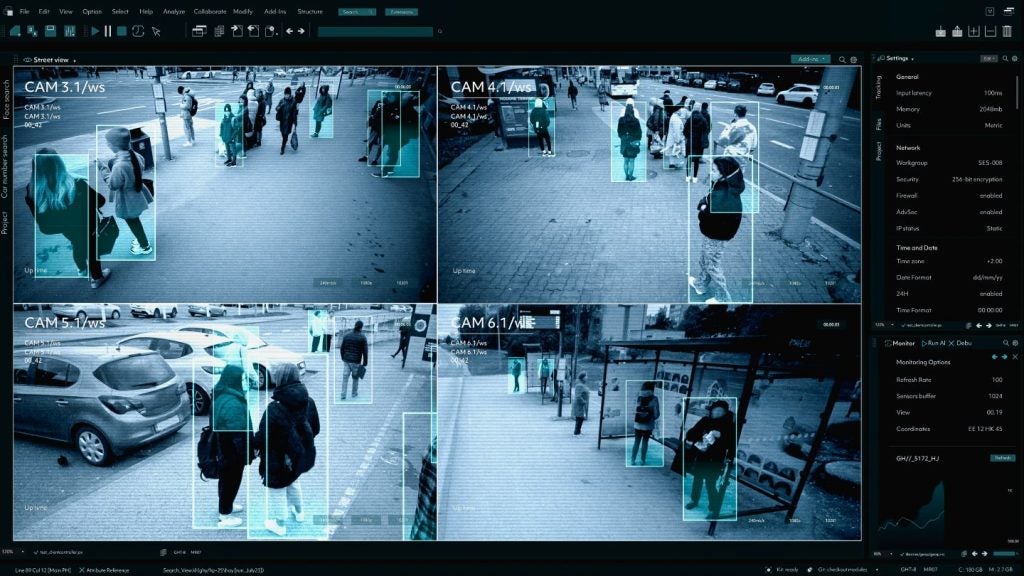
From a climb of the ancient Great Wall to a tour of the contemporary 798 Art District, Beijing offers countless sights and experiences, each of them unique and extraordinary.

Access deeper industry intelligence
Experience unmatched clarity with a single platform that combines unique data, AI, and human expertise.
Soak in the history of one of the oldest cities in the world by visiting the Forbidden City and Tiananmen Square, or take in some culture by viewing an exhibition at the National Art Museum, followed by an invigorating rest at a traditional Chinese teahouse.
798 ART DISTRICT (DASHANZI)

Formerly a Maoist industrial factory compound, in the past decade 798 has become the fast-beating heart of Beijing’s contemporary art world.
With its old decommissioned factory buildings and unique architectural style, the creative cocoon of the 798 Art District is often compared to New York’s Greenwich Village or Soho. A hive of galleries, studios and cafés, it is the preferred destination of Beijing’s hippest and most cosmopolitan new community of contemporary artists, designers, collectors, students and visitors. Enjoy a browse through the district’s endless exhibits and take your time to discover a new favorite Chinese sculptor, photographer or painter. A few galleries worth mentioning include Long March, an avant-garde conceptual space known for housing larger installations, the Ullens Center for Contemporary Art, a top-class gallery/museum founded by a Dutch couple in possession of what may be the world’s finest collection of modern Chinese art, and Galleria Continua, which features local talents and international artists, including hard-hitters like Anish Kapoor and Michelangelo Pistoletto, bringing new and refreshing dialogue to the Beijing art scene.

US Tariffs are shifting - will you react or anticipate?
Don’t let policy changes catch you off guard. Stay proactive with real-time data and expert analysis.
By GlobalData798 Art Zone, 4 Jiuxian Bridge Road, Chaoyang District
THE FORBIDDEN CITY

It would be a grave crime to go to Beijing and not visit this iconic and magnificent architectural complex.
The sprawling palace is a monument of China’s dynasties; 24 emperors ruled from within its red walls for nearly 500 years. The Outer Court, at the center of the Forbidden City, is easily the most impressive part. The Inner Court houses three intricate palaces and the emperor’s private living quarters, and is flanked on both sides by Western and Eastern Palaces. A select few rooms and halls are open to visitors and worth the visit, like the Palace of Eternal Spring, residence of imperial concubines, where tromp-l’oeil paintings at the ends of passageways make them appear infinite. Those looking to avoid crowds might choose to start at the northern Gate of Divine Prowess, a more peaceful entrance, and simply tour the palace in reverse. If you book in advance, you can even enjoy lunch in the hidden, exclusive Gugong Yushan Fang, where its ancient, Qing-style, long banquet table will let you become Emperor Pu Yi for a day.
XI HUA YUAN TEAHOUSE

China’s long history of growing and drinking tea has led to considerable refinement in its production, preparation and serving.
With its many varietals, procedures, subtleties and finesse, a higher enjoyment of Chinese tea might be compared to a connoisseurship of wine in the West. Having Chinese tea at an actual teahouse may just be the highlight of your visit. Xi Hua Yuan serves some of the rarest of Chinese teas, including Longjing green tea, which grows on only 120 select trees in the Zhejiang province, and Da Hongpao from the oolong family, harvested from only several trees on Wuyi Mountain in the Fujian province. Elegant private rooms are available by the hour, but be sure to say “ni hao” to the teahouse’s most prized patron, a Chinese-speaking mynah bird that presides over the main tearoom.
+86 10 6603 8534
92 North Chang Street, West Gate of Forbidden City, Xicheng District
NATIONAL OLYMPIC STADIUM

Designed by Swiss architects Herzog and de Meuron in collaboration with famed Beijing artist Ai Wei Wei, the bird’s nest design of the Olympic Stadium has become a city icon and has remained one of the most striking structures anywhere in the world following the Games.
To visit the stadium is to understand the massive construction program China undertook in preparation for the games. It is the centerpiece of the Olympic Green development, which includes a large landscaped park and the Olympic Village, among various other stadiums and buildings. For a private tour of the Olympic Stadium or other Beijing sites, you may want to contact Stretch-A-Leg. These trip planners will organize bespoke tours and sightseeing experiences to your specifications (www.stretchalegtravel.com).
Olympic Green, Chaoyang District
LAMA TEMPLE (YONGHEGONG)
Also known as the Palace of Peace and Harmony Lama Temple, this 17th century Tibetan Lama temple is a stylistic blend of Han, Mongol and Tibetan symbols and motifs.
The dimensions of the temple are magnificent. Its five main halls are bedecked with many different statues, depictions and different forms of Buddha, the highlight being a vast 55-foot statue of Amitreya, the Future Buddha, encapsulated within the toweringly tall Wanfu Pavillion. Enjoy beautifully carved archways, upturned eaves and the temple’s extensive treasury of Buddhist art, as well as Tibetanstyle wall murals. It is one of the largest and more important Tibetan Buddist monasteries in the world.
+86 10 6404 3769
12 Yonghegong Avenue, Dongcheng District
NATIONAL ART MUSEUM OF CHINA
Showing a number of Chinese and international exhibitions in 17 halls spread over five floors, the National Art Museum of China holds around 100,000 works.
Modern and contemporary pieces make up most of the exhibits, including masterpieces by renowned Chinese painters, award-winning pieces from major national competitions and a large variety of Chinese folk art. Four original Picasso paintings are also housed here, China’s first major acquisition of Western art. Now, the museum holds frequent exhibitions of foreign art, with previous shows including works by Marc Chagall, Joan Miró and Salvador Dali. The National Art Museum also features an exhibit of African wood sculptures and other collections of art from the developing world.
RED CAPITAL CLUB

Think of the Red Capital Club, a boutique inn, restaurant and clubhouse in a Qing-era courtyard in the city center, as an irony-laden witticism on a retro, Communist-kitsch theme.
Furniture favored by Mao fits out the rooms, which come with his provocative Little Red Book at every bedside. The dining room is decked out in vintage fixtures, 1960s’ hand-painted propaganda posters and mass-produced statuettes of the Chairman. With a menu designed to imitate the spread at an official state banquet, you can spend the afternoon enjoying delicious Chinese dishes named after notable party figures. In the underground bar, a converted bomb shelter, women in Red Army gear serve “Lin Biao’s Crashes” (blue Curacao, vodka and maotai — a potent Chinese liquor). The club also boasts a chic cigar lounge, where you can puff away while sitting in an original chair obtained from the Central Government Office, used in the 1950s for discussions among military leaders. But by far our favorite restoration here is the spectacular “Madame Mao’s Red Flag Limo”, the classic old luxury Chinese motorcar parked outside, in which the Red Capital Club offers a 50-minute VIP tour around town, complete with caviar and a redefinition of the word fabulous.
+86 10 8401 6152
66 Dongsi Liutiao, Dongcheng District
CHAOYANG THEATRE
The Chaoyang Theatre is a well-renowned venue, long used for some of Beijing’s greatest performances.
Today, acrobatics have become the main attraction of the theater. China has a worldwide reputation for its remarkable gymnasts, who perform breathtaking routines showcasing their unnerving flexibility and precision. Many classic routines are known for drawing inspiration from everyday life, often using props such as chairs, plates, vases and other household objects. One of the Chaoyang Theatre’s most popular tricks is 20 or so acrobats on a single bicycle. After more than ten years of characteristic management and nightly performances, Chaoyang Theatre is a world-famous acrobatics destination in Beijing. Book your tickets in the VIP zone to get the best view of the action.
+86 10 6526 8228
36 Northeast Third Ring Road, Chaoyang District







